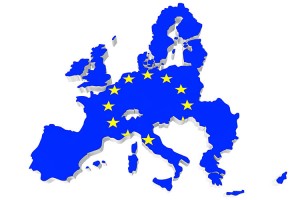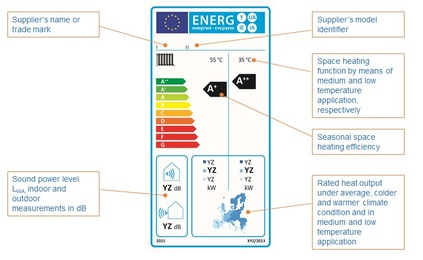 Giving a keynote speech on 17 March 2015 at EUFORES 15th Inter-Parliamentary Meeting on Renewable Energy and Energy Efficiency in Vienna1, Vice-President of the European Commission Maroš Šefčovič spoke about the importance of ecodesign and energy labelling.
Giving a keynote speech on 17 March 2015 at EUFORES 15th Inter-Parliamentary Meeting on Renewable Energy and Energy Efficiency in Vienna1, Vice-President of the European Commission Maroš Šefčovič spoke about the importance of ecodesign and energy labelling.
He strongly supported it: “Not only because this framework will deliver by 2020 energy savings that are roughly the equivalent of annual primary energy consumption of Italy, not only because consumers can save several hundreds of euros per household per year, but also because there is a clear business case. If countries such as Brazil, China, Korea, South Africa and others adopt equipment energy labelling schemes similar to ours, it creates a market for our companies. Let us be the first mover and set the standards!”
The Energy-related Products (ErP) Directive is one of a raft of measures aimed at meeting the EU target of 20% energy savings by 2020 (currently it looks like falling short by one or two percentage points2). These include the Energy Efficiency Directive (EED) and the Energy Performance of Buildings Directive (EPBD) and the roll-out of smart meters following the Internal Electricity Market Directive.
Focus of Ecodesign
Extensions were made to the original EcoDesign Directive in November 2009, with the revised ErP Directive 2009/125/EC bringing in products that not only use energy but also those that affect energy efficiency, such as windows and insulation materials. The European Council for an Energy Efficient Economy3 (ECEEE) provides useful information on the background and structure of these energy saving initiatives, emphasising that the Directive “sets a framework for performance criteria which manufacturers must meet in order to legally bring their product to the market.”
The ECEEE explains that “Ecodesign’ means that there will be a greater focus on lifetime energy use and other environmental aspects during the conception and design phases, before it is manufactured and brought to market.
“The combination of ecodesign and energy labelling is considered as one of the most effective policy tools in the area of energy efficiency… While ecodesign aims at improving the energy and environmental performance of products and set minimum requirements, energy labelling requirements aim at providing the information about the same performance. The recast Energy Labelling Directive 2010/30/EU was adopted in May 2010. It extends the energy labelling system from consumer-related products to energy-related products in the commercial and industrial sectors.”
Need for improvements
The ErP Directive has also highlighted the fact that products with similar functional performances display different degrees of environmental impact: “Many energy-related products have a significant potential for being improved in order to reduce environmental impacts and achieve energy savings through better design which also leads to economic savings for businesses and end users.”
This quest for design improvements will have an increasing impact in driving technological improvements in the energy efficiency products in the HVAC sector and as leading manufacturers of high efficiency gas fired infrared radiant heaters, Schwank welcomes this.
It is absolutely right that the EU has recognised the vital importance of improving the energy efficiency in buildings, since this sector is responsible for almost 40% of the final energy consumption in Europe. Improving the energy saving performance of heating systems will go a long way towards benefiting the environment and reducing end-user energy costs. As Maroš Šefčovič explained, 75% of Europe’s buildings are not energy efficient and “we can and should do better!”
Timetable for compliance
The schedule for compliance of energy related products is drawn up in a system of Lots, or groups of product types, which is described by the ECEEE. Notably for the HVAC sector, after 26th September 2015, manufacturers of space and water heaters will only be able to sell compliant products that meet minimum energy performance standards and emission levels as set down by the Directive. They will also be required to display an energy label in order to qualify for a CE mark and the permission to sell in the European Market. Enforcement of the Directive in the UK is being carried out by The National Measurement and Regulation Office (NMRO)4.
The compliance date for the Lot that will include gas fired infrared radiant heating systems is still some distance away, but already high efficiency solutions are exceeding projected targets. Radiant heaters work on similar principles to the sun’s rays, penetrating the air without heating it and only converting to energy on reaching the people and objects where heat is needed. Input heat is reduced so less heaters are required, cutting both energy consumption and installation costs.
With accurate temperature control, modulation, precise application of heating zones and short heat-up times, high efficiency radiant heating solutions consistently prove their worth in energy efficiency, achieving energy cost reductions of between 30% and 50% when compared to conventional systems.
The high energy efficiency and environmental benefits of gas fired infrared systems put them at the forefront of heating options as more stringent targets for reductions in energy use and carbon emissions are demanded from ErPs in the future.
Sources:
- Speech of Vice President of European Commission http://europa.eu/rapid/press-release_SPEECH-15-4621_en.htm
- Prospects for meeting energy targets http://ec.europa.eu/energy/sites/ener/files/documents/2014_energy_efficiency_communication.pdf
- Information from the European Council for an Energy Efficient Economy http://www.eceee.org/ecodesign
- UK Government information on ErP Directive enforcement https://www.gov.uk/placing-energy-related-products-on-the-uk-market
